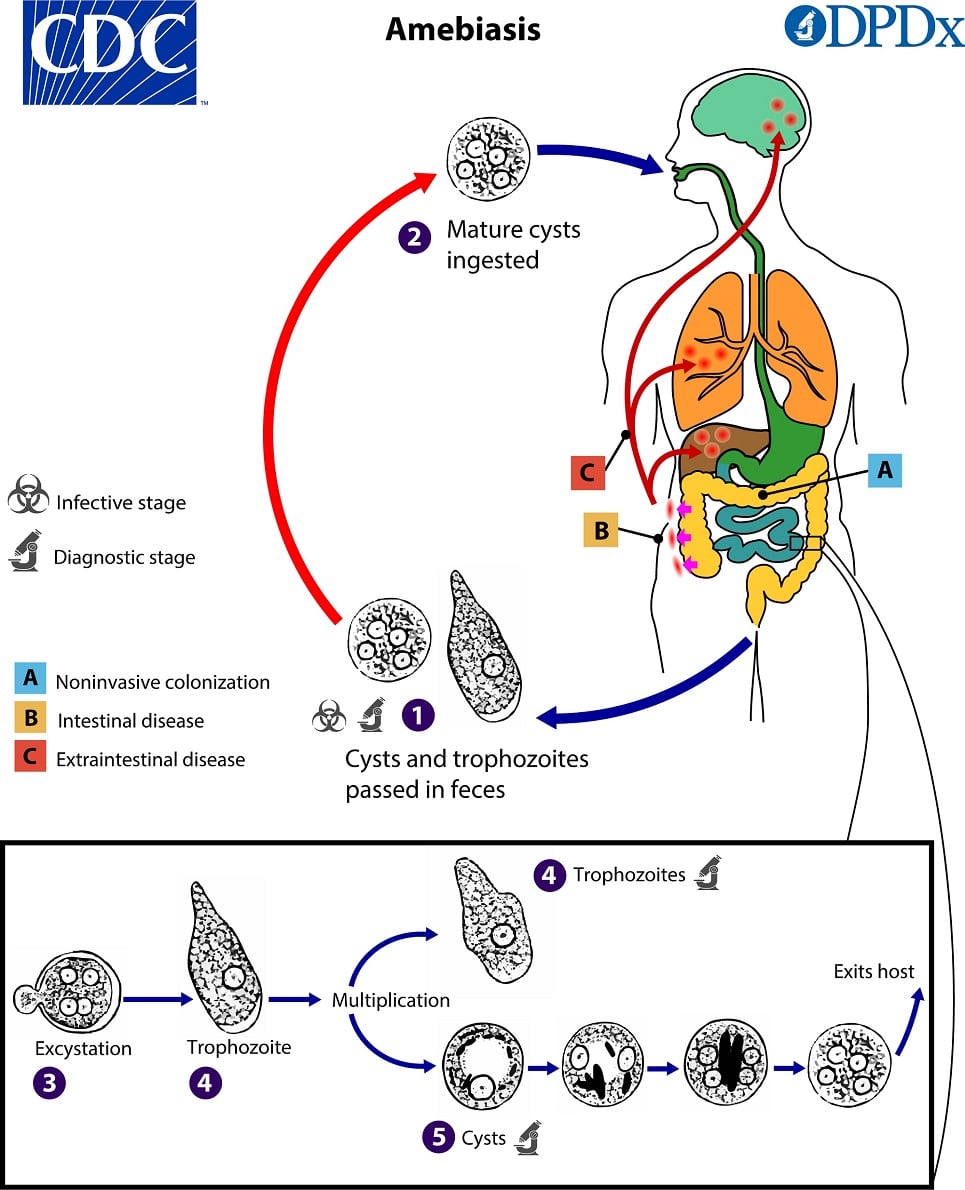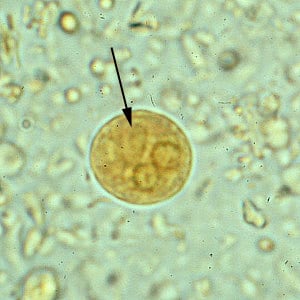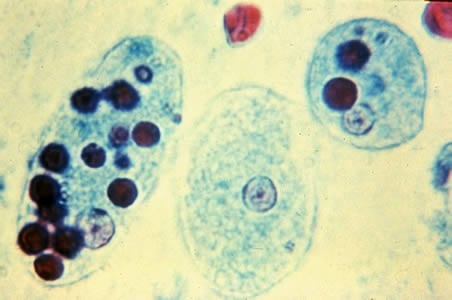It is the causative organism of amoebiasis. The organism exists as cysts and trophozoite forms. Cysts are non motile, typically found in formed stool, whereas trophozoites are motile, typically found in diarrheal stool.
Pathogenesis: Infection by Entamoeba histolytica occurs by ingestion of mature cysts in fecally contaminated food, water or hands. Excystation occurs in the small intestine and trophozoites are released, which migrate to the large intestine. The trophozoites multiply by binary fission and produce cysts. Both stages are passed in the feces. Because of the protection conferred by their walls, the cysts can survive days to weeks in the external environment and are responsible for transmission. Trophozoites cannot transmit the infection.

Clinical features: It ranges from asymptomatic infection (“luminal amebiasis”), to invasive intestinal amebiasis (dysentery, colitis, appendicitis, toxic megacolon, amebomas) and invasive extraintestinal amebiasis (liver abscess, peritonitis, pleuropulmonary abscess, cutaneous and genital amebic lesions). It causes flask shaped intestinal ulcers. Intestinal amoebiasis presents as passage of loose stools with blood and mucus with abdominal pain and tenesmus. The pus from amoebic liver abscess is thick and brownish with an appearance of “anchovy sauce”.
Laboratory diagnosis of amoebiasis: Intestinal form is diagnosed by the presence of trophozoites or cysts in stool samples. Wet or saline mount will show motile trophozoites in a fresh specimen. It is important to differentiate E.histolytica from non-pathogenic amoeba like E.dispar. E.histolytica nucleus has a central nucleolus and chromatin is arranged along the border of the nuclear membrane. Cysts contain 4 nuclei. Trophozoites show ingested RBCs which is pathognomonic for disease causing strains. Cysts can be stained brown with iodine. Amoebic antigen can be detected in stool by CIEP and ELISA. PCR and DNA hybridization are used to detect E.histolytica DNA. For invasive amoebiasis, serologic tests for antibodies like CFT, CIEP, latex agglutination, ELISA, indirect immunofluorescence and indirect haemagglutination tests should be used.

Cyst of E. histolytica/E. dispar in a concentrated wet mount stained with iodine. Notice the chromatoid body with blunt, rounded ends (arrow).

Trophozoites of E. histolytica with ingested erythrocytes stained with trichrome. The ingested erythrocytes appear as dark inclusions. The parasites above show nuclei that have the typical small, centrally located karyosome, and thin, uniform peripheral chromatin.
Sign up for free to take 1 quiz question on this topic